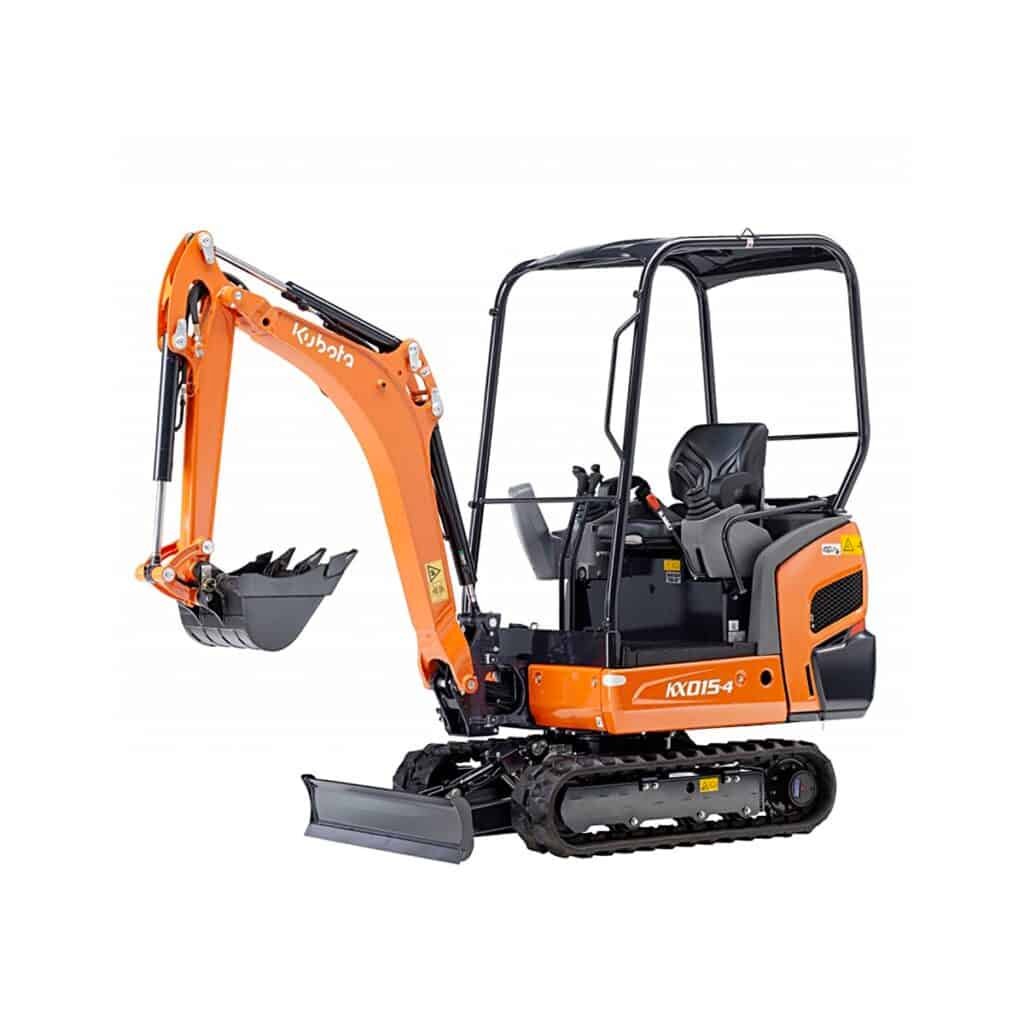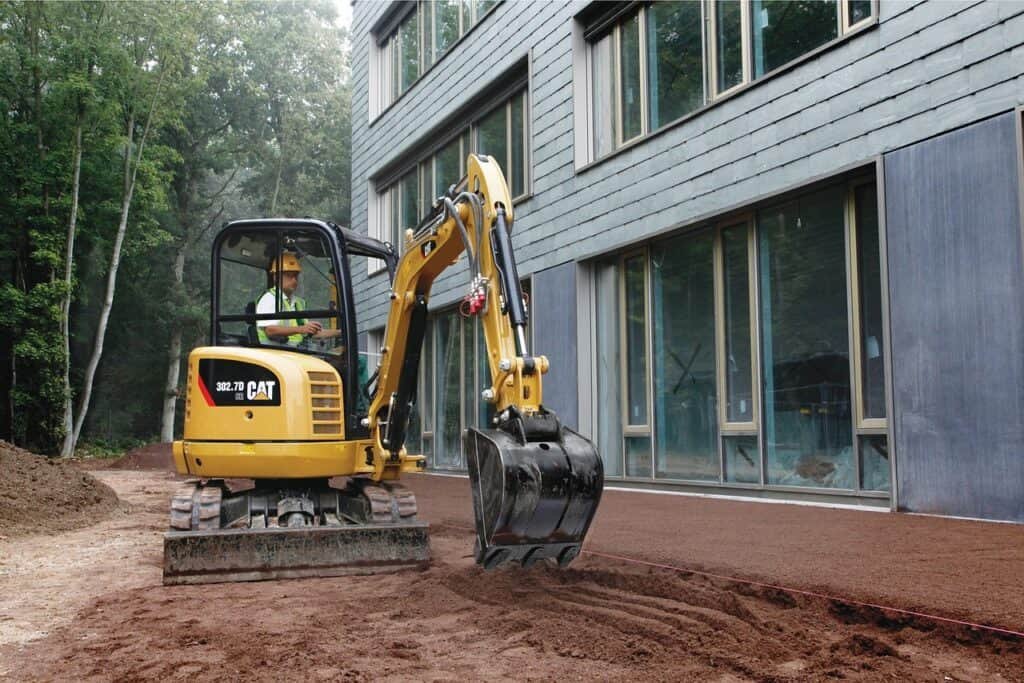Excavators are one of the most versatile machines in the industrial world. They can be used for various tasks, from demolition to mining. But what’s the name of the model of a mini excavator that manufacturers most commonly use? If you guessed SMB, you’d be right! “SMB” is an acronym for “small mobile excavator.” Manufacturers use this name because it’s easy to remember and accurately reflects the type of machine.

What Does it Mean for a Model of A Mini Excavator to be Named?
A model is typically named according to the manufacturing company that produced it. For example, a John Deere model might be named JX, while a Caterpillar model might be CAT. The name may also reflect the engine or tooling used in its construction. A mini excavator, also known as a mini excavator model, is an excavator manufactured by the manufacturer. Dealers often use the model’s name to identify the specific excavator they are selling.
How Are Manufacturers Able to Find the Model of a Mini Excavator?
Manufacturers can find the model of a mini excavator by referencing a few different pieces of information. The first piece of information is the engine type. Mini excavators typically have engines that are either diesel or electric. The second piece of information that manufacturers use is the wheelbase. Mini excavators with a shorter wheelbase are typically used for smaller projects, while those with a longer wheelbase are used for larger projects. The third piece of information that manufacturers use is the weight limit. Mini excavators typically have a weight limit of 4500 pounds.

Configuring Ways to Demonstrate Name Excavators
The excavator’s name is a very important part of the machine and is what the operator sees when operating it. There are many ways to configure name of a excavator to make them easier and more efficient.
The Model Number
The model number of a mini excavator is the unique identification number for that machine. The model number can be found on the machine’s engine block, frame, or plate attached to its side.
The Serial Number
A mini excavator’s serial number is a unique identifier that helps identify the machine when it is returned to the manufacturer for warranty or repair. The serial number also tracks the machine’s history and performance.
The Manufacturer
The manufacturer of a mini excavator may name the model of the excavator by a number or letter. Mini excavators are typically categorized by horsepower, with 1-hp, 2-hp, and 3-hp models available. For example, the model P130 is a 1-hp mini excavator.
The Name of the Mini Excavator to Its Capabilities
The name of the mini excavator is a clue to its capabilities. For example, the model PZ450 has a 450-watt engine that can cope with tougher excavation tasks than other models. The PZ450 also features an extended digging width of 446 mm (17 in.), making it well-suited for larger projects.
The Country of Origin
The country of origin for mini excavators is usually China. Manufacturers often refer to mini excavators as “CP series mini excavators” or simply “CP.” This is because the original model of a mini excavator, the CP-100, was manufactured by the Chinese company Changchun Pueyin Machinery. Later models were made by other Chinese companies, such as Zhuhai Kaidi Heavy Industry and Shanghai Jiao Tong Machinery.
The Parts of a Mini Excavator
Mini excavators operate in smaller, tighter spaces than full-sized excavators. Mini excavators come in a variety of sizes and have different engine configurations. The parts of a mini excavator are as follows: the bucket, the arm, the chipper/shredder, and the tracks.
How to Operate a Mini Excavator
Operating a mini excavator can be a daunting task for the uninitiated. This is because these machines are quitely powerful and is difficult to operate. This article will provide instructions on how to operate a mini excavator safely and effectively. When starting up your mini excavator, make sure that you oil the moving parts thoroughly. Doing so will help reduce the amount of noise your machine makes and help keep the engine running smoothly. Additionally, wear safety equipment when operating your mini excavators, such as goggles, a hearing protector, and work gloves.

If you are using your mini excavator for digging, it is important to know how deep to go. The depth you dig should be based on the type of soil you are working on and the size of your hole. For example, if you are using your machine to remove dirt from a garden, you may only need to go down 1-2 feet below the ground level. However, if you are planning on removing rocks from an area containing gas lines or water pipes, then it is recommended that you go down at least 4-6 feet below ground level.
When completing a project with your mini excavator, it is important to clean up all of the debris that has been created. This includes removing all of the soil that has been removed from the hole and rocks that were dislodged during excavation.
How to Choose the Right Mini Excavator for Your Business
When choosing the right mini excavator for your business, it is important to consider the model’s name and features. There are three main types of mini excavators: crawler, articulated arm, and wheeled. Each has its advantages and disadvantages.
Crawler Excavators: Crawlers are the cheapest mini excavator type and best suited for small projects like digging a hole in the ground. They have limited maneuverability and can only operate on flat terrain. Crawlers also have a short life span because they are difficult to maintain and can be damaged easily by debris or rocks.
Articulated Arm Excavators: Articulated arm excavators are better than crawlers for large projects because they have more maneuverability and can work on slopes. They also have a longer life span because they are less susceptible to damage. However, articulated arm excavators can be more expensive than crawlers and require more maintenance.
Wheeled Excavators: Wheeled excavators are the most expensive type of mini excavator, but they offer the best overall performance. They have plenty of maneuverability and can work on uneven terrain. Wheeled excavators also tend to be more reliable than other types of mini excavators.
H1 Naming, Weight, Bucket, and Engine of Mini excavator
There are many different models of mini excavators on the market. The naming system used by the manufacturers is quite complex. Here is an overview of the various models and their names: Engine – This identifies the engine type used in the mini excavator. Some engines used in mini excavators have a max speed of 9 km/h or five mph. Mini excavators come in a variety of models, sizes, and horsepower. The manufacturers use the H1 naming system to identify the model of the mini excavator. The weight of the mini excavator is measured in buckets. And the engine is referred to as the “engine type.” The mini excavator model is also used to identify the bucket capacity and engine type.
H2 Naming, the Purpose of Weight, Bucket, the Engine of Mini Excavator
H2 naming indicates the engine’s horsepower in a mini excavator. The higher the H2 number, the more powerful the engine. In general, mini excavators with engines under ten hp are usually called “hubs,” Those with engines between 10 and 30 hp are called “skins.” Mini excavators over 30 hp are usually referred to as “go-karts.” The weight in a mini excavator is to balance the machine while operating. The heavier the machine is, it is easier to balance. Most mini excavators have a bucket capacity of 2 cubic yards. The engine of the mini excavator power the bucket and helps move the machine through the soil.

H3 Naming Usage Mini Excavator Equipment’s
Manufacturers of mini excavators commonly use the H3 naming convention. The first letter represents the engine type (A, B, C), and the second represents the engine’s configuration (S, M, L).
Manufacturers generally name their mini excavator models according to the engine power (HP) and the wheelbase. For instance, a mini excavator with an HP 4,000 is typically named the “4000” model, while one with an HP 6,000 is labeled as the “6000” model. Likewise, a model with a wheelbase 3 meters is typically called a “3000” model, while one with a wheelbase 4 meters is called a “4000”.
H3 Naming Usage Mini Excavator Equipment’s
There are various types of mini excavator equipment available in the market. The manufacturers name these machines according to the type of work they can do. The different types of machines are as follows:
1. Mini Excavator for Hard Ground: These machines are designed to clear hard ground. They have a high speed and can move large amounts of soil quickly.
2. Mini Excavator for Soft Ground: These machines are also good at clearing the soft ground, but they may not be as efficient as the ones for hard ground. They usually have lower speed and are less powerful than the ones for hard ground.
3. Mini Excavator for Sewerage Work: These machines are used to clear sewer lines and drains. They have a wide range of capabilities, from small openings to large tunnels.
Compatibility-Wise Naming of Mini Excavator
The model of a mini excavator is usually based on the engine size. For example, a mini excavator with an engine size of 1.5 torsions would be called a 1.5L mini excavator, while one with an engine size of 2.0 torsions would be called a 2.0L mini excavator. Other factors that can affect compatibility are the width and height of the machine, as well as its wheelbase and frame size.

Equipment-Wise Naming of Mini Excavator
Mini excavator manufacturers usually name their mini excavators by a model number followed by the year of their manufacture. For example, a mini excavator manufactured in 2016 would be labeled “2016 model”. However, a few companies do not follow this naming convention.
The following is a list of the most common mini excavator model numbers and their corresponding year of manufacture:
- CAT C12 Plus: 2012
- CAT C13: 2013
- CAT C14: 2014
- CAT C15: 2015
- CAT C16: 2016
- Caterpillar 3208A: 2006
- Caterpillar 3209A: 2007
- Caterpillar 3210A: 2008
- Caterpillar 3221A/3207B/3211B/3222B: 2009
- Caterpillar 3223A/3227B/3228B/3229B/3230B: 2010
- Caterpillar 3250C(CB): 2011
- BRD 330C(CB): 2012
- BRD 331C(CB): 2013
- John Deere 350G(LH): 2014
- John Deere 360G(LH): 2015
- John Deere 370G(LH): 2016
A mini excavator is a machine used to dig and move soil, rocks, and other materials. The name of the model of mini excavator is usually based on the manufacturer’s name. For example, Caterpillar Inc. has a model of mini excavators called the CAT 350C. There are a few different ways to name mini excavators. One way is to use the manufacturer’s model name. For example, a John Deere Excavator would be named John Deere 9100. Another way is to use the engine size. For example, a mini excavator with an engine size of 6 horsepower would be called a 6-hp mini excavator.
Conclusion
The first letter of the model is followed by a number and different ways to name a mini excavator model. This system makes it easier for consumers to differentiate models. We hope to help you identify the correct excavator for your needs. When shopping for an excavator, it is important to take into account not only its features but also its model name. If you have any questions or want clarification on a particular model name, please don’t hesitate to contact us. We would be happy to assist you in finding the right excavator for your project.

